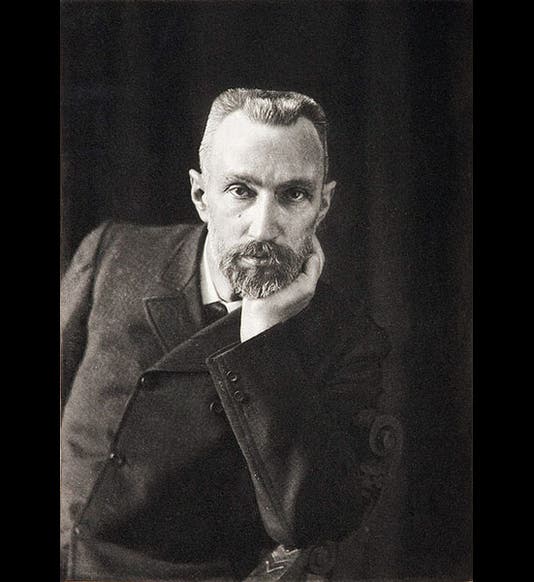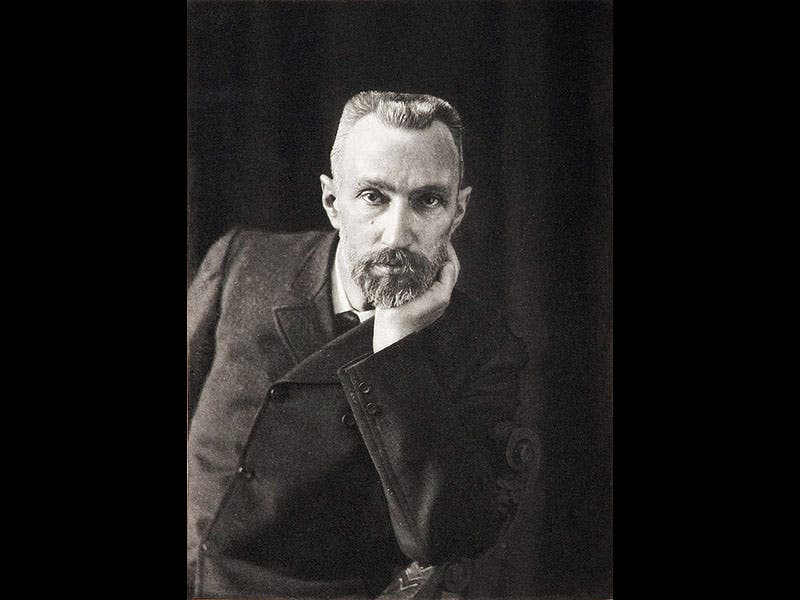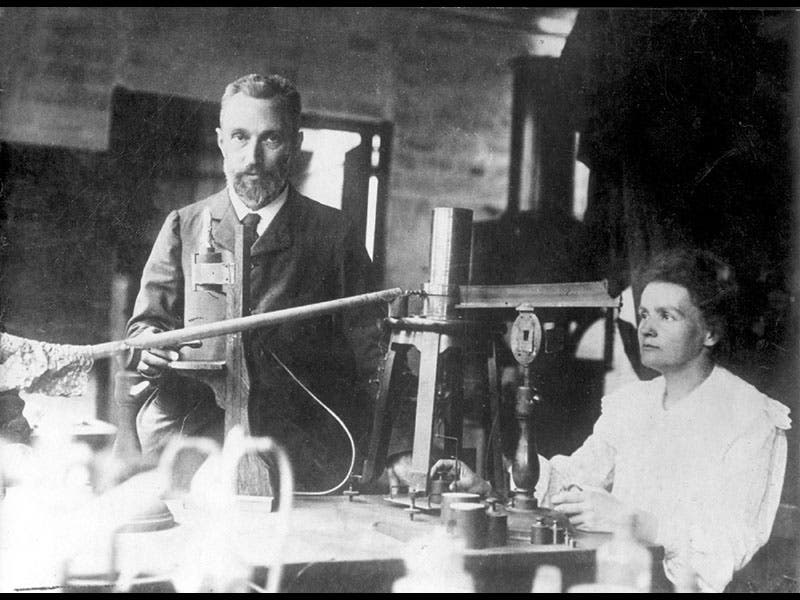Scientist of the Day - Pierre Curie
Pierre Curie, a French physicist, died Apr. 19, 1906. In 1895, Pierre married Marie Sklodowska of Poland, who had been studying in Paris, and after radioactivity was discovered by Henri Becquerel in 1896, Pierre and Marie went on to isolate a new radioactive element, radium, in 1898. Pierre and Marie, along with Becquerel, shared the Nobel Prize in Physics in 1903. Three years later, Pierre was dead, the result of a tragic accident. He was crossing the Rue Dauphine in Paris, near the Pont Neuf, when he was run over by a horse-drawn cart. Knocked to the ground, his head was crushed by a cart wheel, and he died instantly. A French newspaper “extra” recreated the scene of the tragedy (third image above). He was only 46 years old, and he left behind not only his wife Marie, but two daughters: Irene, born in 1897, and Eve, born in 1904. The photo of Pierre alone (first image) was taken shortly before his death; the photo of Pierre and Marie in the lab (second image) was shot in 1904.
Pierre was buried in a family plot, and Marie joined him after her death in 1934, but in 1995, both were removed from their graves and reburied in the Pantheon in Paris, the Westminster Abbey of France, when it comes to distinguished burials. Marie’s marble sarcophagus sits just above Pierre’s (fourth image). Pierre was the 73rd French male to be laid to rest in the Pantheon, but Marie was the first woman to be buried there because of her own achievements.
Dr. William B. Ashworth, Jr., Consultant for the History of Science, Linda Hall Library and Associate Professor, Department of History, University of Missouri-Kansas City. Comments or corrections are welcome; please direct to ashworthw@umkc.edu.










